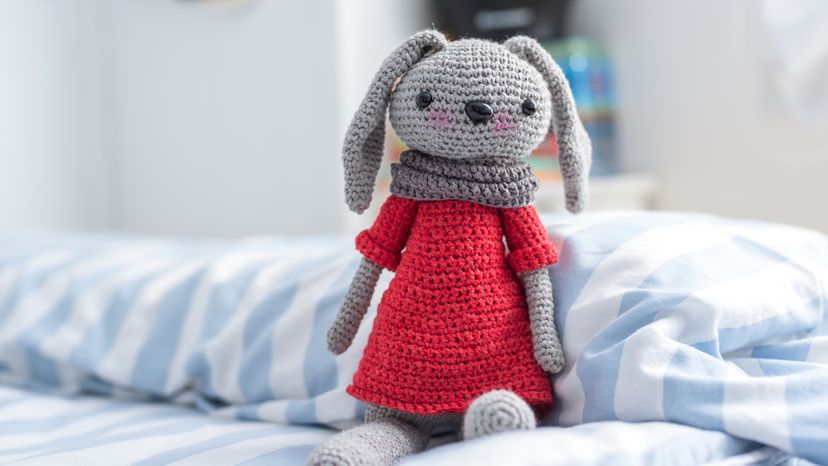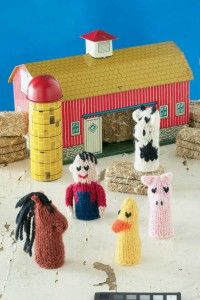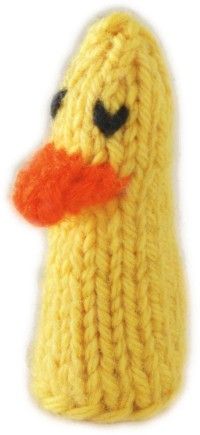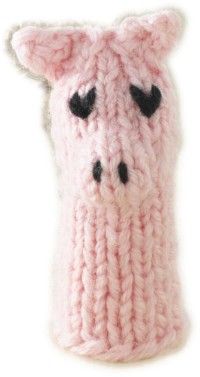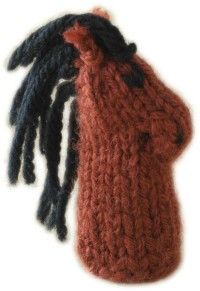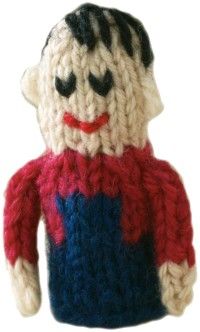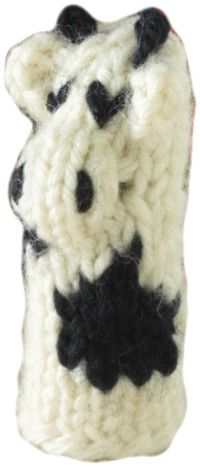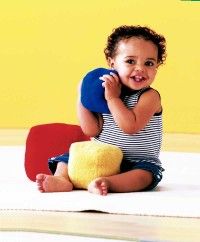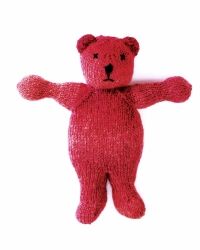Your reward for knitting this soft and cuddly teddy bear will be the huge smile on your child's face. What are you waiting for?
Size
Length: 12" (30.5cm) from head to toe
Width: 11" (28cm) from end of arm to end of arm
What You'll Need
Yarn: Light worsted weight yarn, about 175 yards (160m); black scrap yarn for facial details
We used: Knit One Crochet Too Paint Box (100% wool; 100 yards [91.5m] per 50g skein): #12 Tandoor, 2 skeins
Needles: US size 5 (3.75mm) double-pointed, 2 sets of 4
Notions: Open-ring stitch markers; 4 safety pins; stitch holders; tapestry needle; long sewing pins; fiberfill stuffing
Gauge
20 stitches and 24 rows=4" (10cm) in stockinette stitch
Make the Bear
Leg
Cast on 15 stitches. Divide stitches evenly onto 3 needles and join into circle, taking care not to twist stitches. Place marker.
Round 1: Knit.
Round 2: (Knit 1, make 1) 14 times, knit 1. (29 stitches; 9 stitches on first needle, 10 stitches each on second and third)
Rounds 3-7: Knit.
Round 8: Knit 10, knit 2 together, knit 5, work slip slip knit decrease, knit 10. (27 stitches)
Round 9: Knit 9, knit 2 together, knit 5, work slip slip knit decrease, knit 9. (25 stitches)
Round 10: Knit 8, knit 2 together, knit 5, work slip slip knit decrease, knit 8. (23 stitches)
Round 11: Knit 7, (double-centered decrease: slip 2 stitches as if to knit them together, knit next stitch, pass the slipped stitches over) 3 times, knit 7. (17 stitches)
Rounds 12-16: Knit.
Round 17: Knit 5, make 1, knit 6, make 1, knit 6. (19 stitches)
Rounds 18-21: Knit.
Round 22: Knit 3, make 1, knit 6, make 1, knit 6, make 1, knit 4. (22 stitches)
Rounds 23-26: Knit.
Knit 3, place next 5 stitches on safety pin (inner thigh join). Cut yarn leaving 4" (10cm) tail to weave in later. Leave the remaining stitches on 3 needles. (17 stitches total)
Second Leg
Using the second set of double-point needles, work second leg same as first leg through round 26. Place marker.
Join Legs
Continuing with second leg, knit 14 stitches, place next 5 stitches on safety pin. Position the first leg so the safety pins are next to each other where legs meet. Check to make sure both feet are facing the same direction. Do not cut yarn; using the same working yarn, knit across 17 stitches from needles holding the stitches of the first leg, then knit the remaining 3 stitches from second leg to the marker. You will have a circle shape with 34 stitches on needles and 2 safety pins with 5 stitches on each in the middle.
Slip each set of 5 stitches onto a double-point needle. With right sides together, using another (third) needle bind off the 2 sets of 5 stitches together using the 3-needle bind-off method. Cut yarn and secure last stitch.
Body
Round 1: Join yarn, (knit 4, make 1) 4 times, knit 2, (make 1, knit 4) 4 times. (42 stitches)
Rounds 2 and 3: Knit.
Round 4: Knit 1, (knit 10, make 1) 4 times, knit 1. (46 stitches)
Rounds 5-15: Knit.
Round 16: (Knit 9, knit 2 together, knit 10, knit 2 together) 2 times. (42 stitches)
Rounds 17-19: Knit.
Round 20: Knit 4, (knit 2 together, knit 9) 3 times, knit 2 together, knit 3. (38 stitches)
Rounds 21 and 22: Knit.
Leave the 38 body stitches on their needles as temporary stitch holders.
Arm (Make 2)
With second set of double-point needles, cast on 6 stitches. Divide stitches evenly onto 3 needles and join into circle, taking care not to twist stitches. Place marker.
Round 1: Knit.
Round 2: (Knit 1, make 1) to end of round. (12 stitches)
Round 3: Knit.
Round 4: (Knit 2, make 1) 6 times. (18 stitches)
Round 5: Knit.
Round 6: (Knit 3, make 1) 6 times. (24 stitches)
Rounds 7-10: Knit.
Round 11: Knit 2, (knit 2 together) 10 times, knit 2. (14 stitches)
Rounds 12-15: Knit.
Round 16: Knit 1, (knit 4, make 1) 3 times, knit 1. (17 stitches)
Rounds 17-19: Knit.
Round 20: Knit 3, (make 1, knit 5) 2 times, make 1, knit 3. (20 stitches)
Rounds 21-23: Knit.
Round 24: Knit 1, (knit 6, make 1) 3 times, knit 1. (23 stitches)
Rounds 25 and 26: Knit.
Place all 23 stitches on holder.
Repeat steps to make second arm.
Join Arms to Body
Beginning at center back of body, knit across 7 stitches of body; place next 5 stitches of body (underarm) on safety pin. Working with 1 arm at a time, place 5 stitches from the arm on another safety pin for underarm, knit across remaining 18 stitches of arm, knit across 14 stitches of body, place next 5 body stitches on another safety pin for underarm. Working with the second arm, place 5 stitches on safety pin, knit across 18 stitches of second arm. Knit across 7 stitches of body. (64 stitches on needle, and 4 safety pins each with 5 stitches)
Bind off underarm stitches using 3-needle bind-off method.
Next round: Knit 3, *knit 9, knit 2 together; repeat from * 5 times more, knit 4. (58 stitches)
Decrease for Shoulders
Round 1: Knit 6, slip next 2 stitches as if to knit them together, knit 1, pass the slipped stitches over the just-worked stitch (double decrease), knit 11, double decrease, knit 12, double decrease, knit 11, double decrease, knit 6. (50 stitches)
Round 2: Knit 5, double decrease, knit 9, double decrease, knit 10, double decrease, knit 9, double decrease, knit 5. (42 stitches)
Round 3: Knit 4, double decrease, knit 7, double decrease, knit 8, double decrease, knit 7, double decrease, knit 4. (34 stitches)
Round 4: Knit 3, double decrease, knit 5, double decrease, knit 6, double decrease, knit 5, double decrease, knit 3. (26 stitches)
Round 5: Knit 2, double decrease, knit 6, double decrease, knit 4, double decrease, knit 6, double decrease, knit 2. (18 stitches)
Rounds 6 and 7: Knit.
Head
Round 1: (Knit 1, make 1) 17 times,
knit 1. (35 stitches)
Rounds 2 and 3: Knit.
Round 4: (Knit 4, make 1) 4 times, k3, (make 1, k4) 4 times. (43 stitches)
Rounds 5-7: Knit.
Round 8: Knit 21, make 1, knit 22. (44 stitches)
Round 9: Knit.
Round 10: Knit 20, make 1, knit 3, make 1, knit 21. (46 stitches)
Rounds 11 and 12: Knit.
Round 13: Knit 19, knit 2 together, knit 4, work slip slip knit decrease, knit 19. (44 stitches)
Round 14: Knit.
Round 15: Knit 18, knit 2 together, double decrease, work slip slip knit decrease, knit 19. (40 stitches)
Rounds 16-19: Knit.
Round 20: Knit 3, knit 2 together, knit 4, double decrease, (knit 4, knit 2 together) 2 times, knit 4, double decrease, knit 4, knit 2 together, knit 3. (32 stitches)
Round 21: Knit 2, knit 2 together, knit 4, double decrease, (knit 2, knit 2 together) 2 times, knit 4, double decrease, knit 2, knit 2 together, knit 2. (24 stitches)
Round 22: (Knit 2 together) 12 times. (12 stitches)
Cut yarn leaving 6" (15cm) tail. Thread tail on tapestry needle, pull through remaining stitches, and fasten off.
Ear (Make 2)
Cast on 3 stitches.
Row 1: Knit into front and back of first and second stitch, knit 1. (5 stitches)
Row 2 (and all even rows): Purl.
Row 3: Knit into front and back of first stitch, knit 2, knit into front and back of next stitch, knit 1. (7 stitches)
Row 5: Knit.
Row 7: Work slip slip knit decrease, knit 3, knit 2 together. (5 stitches)
Row 9: Work slip slip knit decrease, knit 1, knit 2 together. (3 stitches)
Row 11: Knit 3 together.
Cut yarn and fasten off.
Repeat steps to make second ear.
Fold ears in half. Pin in place at top of head, matching loose edges. With yarn threaded on tapestry needle, whipstitch ears in place.
Stuff bear with fiberfill as evenly as possible, filling through opening in feet. Whipstitch feet closed. Using black yarn threaded on tapestry needle, complete facial features by embroidering an "X" for each eye, a diamond shape for the nose, and 2 lines for the mouth.
These easy knitting patterns will be fun to create, and children will delight in the adorable finished product.
For more helpful knitting tips and interesting patterns, try:
Contributing designers: Lucie Sinkler and Chrissy Gardiner
